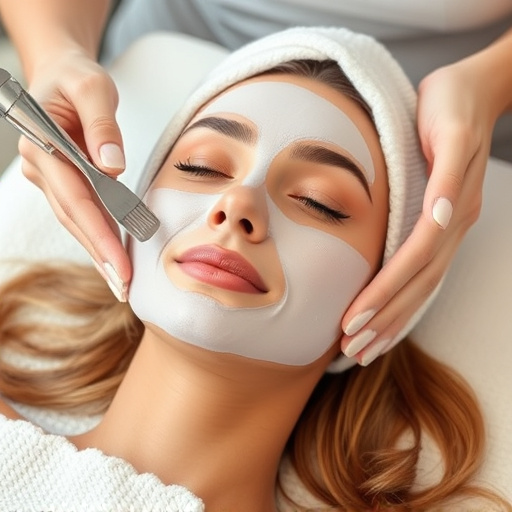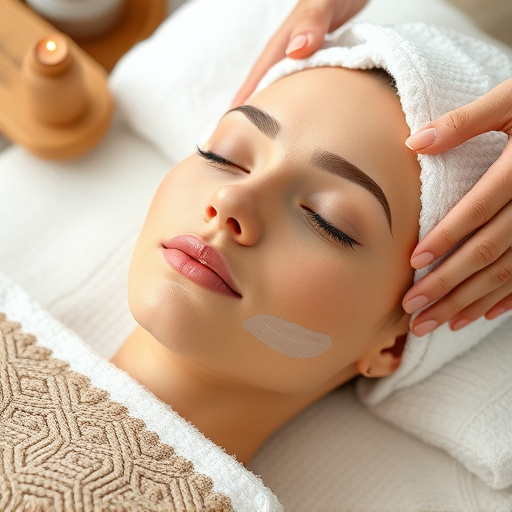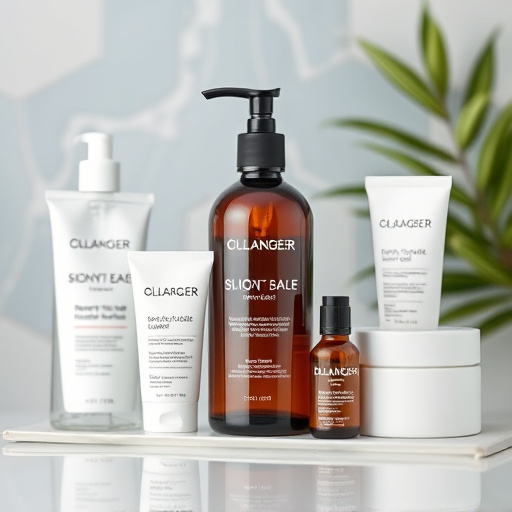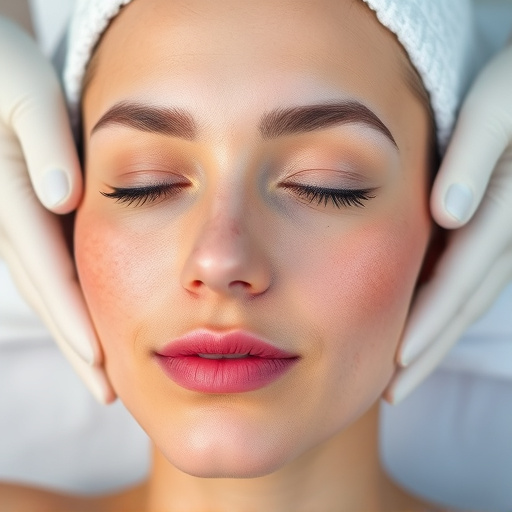Lactic acid peels provide significant skincare benefits for various skin types, including improved texture, reduced fine lines, and enhanced complexion. They exfoliate dead skin cells, stimulate collagen production, and hydrate the skin. Ideal for dry, rough, or uneven textures, lactic acid peels also address hyperpigmentation and sun damage. Regular sessions can enhance other facial treatments. However, due to potential skin sensitivities, a dermatologist consultation is advised before starting any regimen.
Discover the transformative power of lactic acid peels for your skin. This gentle yet effective exfoliant is a game-changer for various skin types, especially those struggling with dryness, hyperpigmentation, or acne scars. In this article, we demystify lactic acid peels and explore how they work on a cellular level to rejuvenate the skin. We’ll delve into which skin types reap the most benefits and consider different concerns, providing insights to help you make informed decisions for a brighter, smoother complexion.
- Understanding Lactic Acid Peels and Their Mechanism of Action
- Skin Types That Typically Benefit Most from Regular Use
- Potential Benefits and Considerations for Different Skin Concerns
Understanding Lactic Acid Peels and Their Mechanism of Action

Lactic acid peels are a popular aesthetic treatment that offers profound benefits for various skin types. This procedure involves applying a solution containing lactic acid to the skin, which gently exfoliates and resurfaces it. Lactic acid is a naturally occurring alpha hydroxy acid (AHA) derived from lactose, known for its hydrating properties and ability to enhance skin texture. When used in professional skincare treatments, lactic acid peels work by breaking down the bonds between dead skin cells, allowing them to be washed away and revealing smoother, more radiant skin beneath.
Unlike harsher chemical peels, lactic acid peels are gentle yet effective, making them suitable for individuals seeking improved skin texture, reduced fine lines, and an overall healthier complexion. The mechanism of action involves the acid’s ability to dissolve the glue-like substance that binds dead skin cells together, promoting cell turnover and stimulating collagen production. This process not only improves skin tone and texture but also boosts the skin’s elasticity, contributing to a more youthful appearance and skin tightening.
Skin Types That Typically Benefit Most from Regular Use

Skin types that typically benefit most from regular use of lactic acid peels include dry, rough, and uneven skin textures. Lactic acid, a gentle alpha hydroxy acid (AHA), is known for its exfoliating properties that help remove dead skin cells, unclog pores, and stimulate cell turnover. This makes it particularly effective for individuals with dryness, as it can hydrate and soften the skin while gently sloughing off harsh, flaking layers.
For those struggling with hyperpigmentation or sun damage, lactic acid peels offer a safe and customized facial treatment option. The acid’s ability to penetrate deep into the skin helps fade age spots and even out skin tone. Moreover, when incorporated into a professional skincare routine, regular lactic acid peel sessions can enhance the overall effectiveness of other facial treatments, ensuring optimal results from your beauty regimen.
Potential Benefits and Considerations for Different Skin Concerns

Lactic acid peels offer a multitude of potential benefits for various skin types and concerns. For those with personalized skincare needs, lactic acid can play a pivotal role in achieving smoother, more even-toned skin. This gentle yet potent exfoliant helps remove dead skin cells, promoting cell turnover and revealing brighter, more radiant skin beneath. Additionally, it has hydrating properties that can benefit dry or sensitive skin, making it an excellent choice for those looking to enhance their skin’s overall texture and hydration levels.
When it comes to addressing specific skin concerns, lactic acid peels are particularly effective for body contouring and skin rejuvenation. By encouraging the production of collagen, a key protein responsible for skin elasticity, lactic acid can help reduce the appearance of fine lines and wrinkles. Moreover, its ability to gently exfoliate and smoothen the skin’s surface makes it valuable for treating uneven skin tone, hyperpigmentation, and mild acne scars. However, it’s crucial to consider that while lactic acid peels are generally well-tolerated, they may not be suitable for all skin types or conditions, so a consultation with a dermatologist is advisable before starting any new treatment regimen.
Lactic acid peels offer significant benefits for various skin types, particularly those with rough texture, hyperpigmentation, or mild acne scars. Regular use can enhance skin elasticity and clarity, making it a popular choice in skincare routines. For individuals seeking improved skin texture and a more even complexion, lactic acid peels are a game-changer, providing a gentle yet effective solution for achieving healthier, smoother skin.














